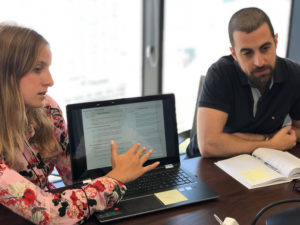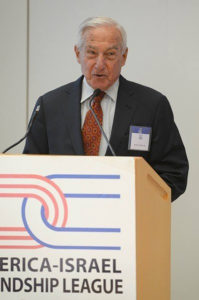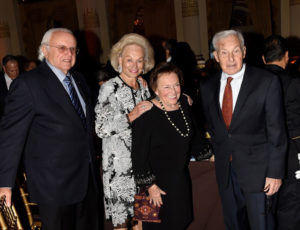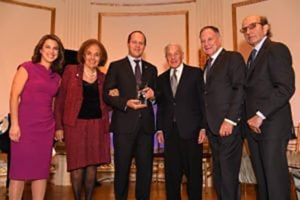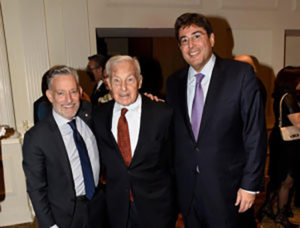By: Amir Taheri
Journalists across the globe have always regarded this time of the year, the heart of the summer, as the silly season in which nothing of much interest happens, at least on the political front. The silly season is filled with news of the birth of double-headed sheep in New Zealand, the discovery of the remains of Atlantis, the lost continent, in the Algerian Sahara or, to add a bit of spice, the suicide of a pedophile billionaire in a high-security prison in America.
Thus, one might say that the G7 summit in the French resort town of Biarritz, starting Saturday, is an exception to the silly season rule. Or is it?
The summit was the brainchild of French President Valéry Giscard d’Estaing who first hosted it as a G6 in 1975 with Britain, Italy, Japan, West Germany, and the US attending.
The original idea was to focus on global economic issues in the aftermath of the recession triggered by the oil shocks of 1971 and 1973. Within a year or two, however, the summit, now also including Canada and the European Economic Community, the future European Union, had expanded its remit to include major political issues. By 1978, when the group met in Guadeloupe, G7 had morphed into an international politburo pretending to set the tune for the whole world.
In one of those delicious ironies that add flavor to history, as the group, which ended up including Russia after the fall of the USSR, saw its real power to affect global trends decline while its ambitions to rule the world spiraled. The group could do nothing about the Soviet invasion of Afghanistan, the disintegration of the USSR, the collapse of the Warsaw Pact, the seizure of power by the mullahs in Iran, China shifting gears towards a capitalist system, the wars triggered by Saddam Hussein and the rise of international terrorism in the name of religion. More importantly, perhaps, the “global politburo” had no role in the dramatic technological changes that dragged the world into something bigger than the Industrial Revolution.
By the mid-1990s the G8 summit, as it was before Russia was kicked out, had morphed into a talking shop and a photo-op for political leaders in search of relevance in a new world they could no longer control. In one of the summits, hosted in Lyon by France, the participants made “decisions” on almost everything under the sun, knowing all along that they had neither the intention nor the power to act on any of them.
Well, how relevant is the G7 today?
The short answer is: not very much. That became clear in last year’s summit hosted by Canada when Germany’s Angela Merkel and France’s Emmanuel Macron tried to “educate” President Donald Trump on the facts of political life as they saw it, only to provoke the American into counterattacking with one of is typical ripostes. The whole thing ended up as a farce when Canada’s youthful and inexperienced Prime Minister Justin Trudeau tried one of his shenanigans by interpreting the final communiqué in a distinctly mischievous manner.
Hearing of this, Trump, then aboard his presidential aircraft, tweeted his rejection of the whole communiqué. In normal circumstances that should have meant the end of a charade that started almost half a century ago. That it did not is due to the notorious tenacity of bureaucracies that, once given life, refuse to die.
This weekend’s summit is supposed to focus on three issues. The first is the quest for some kind of international law and order in the digital world that transcends both the nation-state and groupings such as the European Union. As things stand, it is unlikely that anything that is said or “decided” in Biarritz would create the kind of control that bureaucrats in major capitals dream of.
The second issue is the perennial one of combating terrorism. The Lyon summit in 1996 enacted 45 measures that, apart from having to take off our shoes at checkpoints in airports, none was implemented. Terrorist groups are today as alive, if not more, as they were in those days when President Jacques Chirac boasted he would wipe them out in a year or two.
The third issue is what to do about an increasingly shaky but still aggressive Islamic Republic that still controls Iran. The Europeans, perhaps minus Britain under Boris Johnson, but plus Canada and possibly Japan, wish to continue paying lip service to the dead “nuke deal” inherited from President Barack Obama in the hope of avoiding a major crisis in the Middle East. Plagued by economic slowdown and Brexit, the EU is pressing for a pause in pushing the mullahs across the precipice. At the same time, however, the EU lacks the courage to throw a buoy to the drowning Khomeinist cabal in Tehran.
The Trump administration, or rather Trump himself, however, need do nothing more, as the sanction snap-back begins to make a real impression on the Khomeinist regime.
The fourth issue is that of the so-called trade war between China and the US. There, too, there is almost nothing that G7 can do to affect the course of events, let alone their outcome. Economic reality is beginning to set the contours of Trump’s strategy of tariff warfare against China, which, when all is said and done, is, in fact, subsidizing the American consumer both through lower prices for its goods and the massive purchase of US treasury bonds.
The Biarritz summit may end with the fixing of the date and place for another summit next year. It may also provide an opportunity for Britain’s new Prime Minister Johnson to get to know Trump better while also lobbying Merkel and Macron for help to extricate the UK from the tangled web of Brexit it has woven over the past three years.
Even if Trump demands that Russia and China be invited to join the group, it is unlikely that the event will regain whatever relevance it once had.
In the meantime, deprived of significant news, reporters can enjoy one of the world’s best cuisines in the resort city’s top hotel. Count it as a bright moment in the silly season.
(Gatestone Institute)
Amir Taheri was the executive editor-in-chief of the daily Kayhan in Iran from 1972 to 1979. He has worked at or written for innumerable publications, published eleven books, and has been a columnist forAsharq Al-Awsat since 1987. He is the Chairman of Gatestone Europe.
This article was originally published by Asharq al-Awsat and is reprinted by kind permission of the author.






